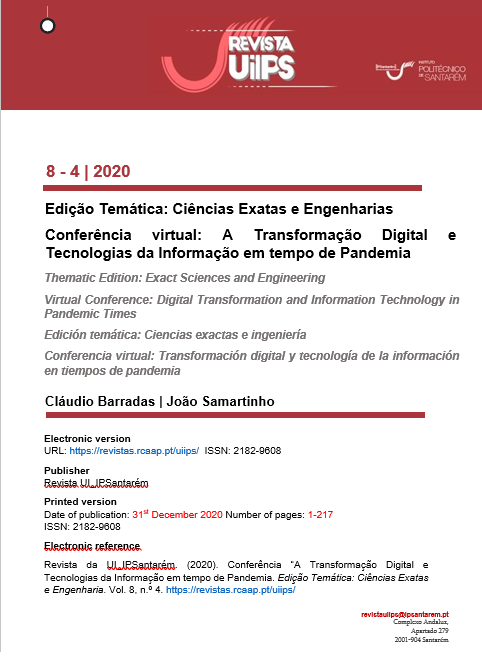Digital Educational Resources as facilitators of digital transition in time of pandemic: a strategy for the inclusion of pupils with Specific Needs in the 1ºCEB
DOI:
https://doi.org/10.25746/ruiips.v8.i4.21970Keywords:
Inclusion, Specific Needs, Pandemic, Digital Educational ResourcesAbstract
In the current context of face-to-face classes, it has become necessary to find new ways of learning for students in order to acquire meaningful learning. We used collaborative, group work and the use of RED in order to achieve the interactions that would allow the development of learning strategies for students with NE and that would promote, at the same time, their inclusion in the classes where they were integrated.
This work presents a project that used a group of students with NE, from a Primary School, where a story from RED Calaméo was developed and presented with the aim of enhancing the inclusion of these students with their peers.
Complementarily, it was intended to understand if the students with NE felt more motivated, more integrated in a classroom context and better accepted by their peers.
As a result, we can see that the group of students developed language skills, expressiveness, as well as interaction, which they did not have until now. Their self-esteem and motivation was evidenced by the class teachers as relevant after the presentation of the story. We consider that the proposed objectives have been achieved namely, through collaborative work and the exploration of RED, as vehicles for the integration of students and the improvement of their self-esteem.
Downloads
Published
How to Cite
Issue
Section
License
Authors publishing in this journal agree to the following terms:
Authors retain copyright and grant the journal the right of first publication, with the article simultaneously licensed under the Creative Commons Attribution License that allows sharing of the work with acknowledgement of authorship and initial publication in this journal.
Authors are permitted to enter into additional contracts separately for non-exclusive distribution of the version of the article published in this journal (e.g., publish in an institutional repository or as a book chapter), with acknowledgment of authorship and initial publication in this journal.
Authors have permission and are encouraged to publish and distribute their work online (e.g., in institutional repositories or on their personal webpage) at any point before or during the editorial process, as this may generate productive changes, as well as increase the impact and citation of the published work.



